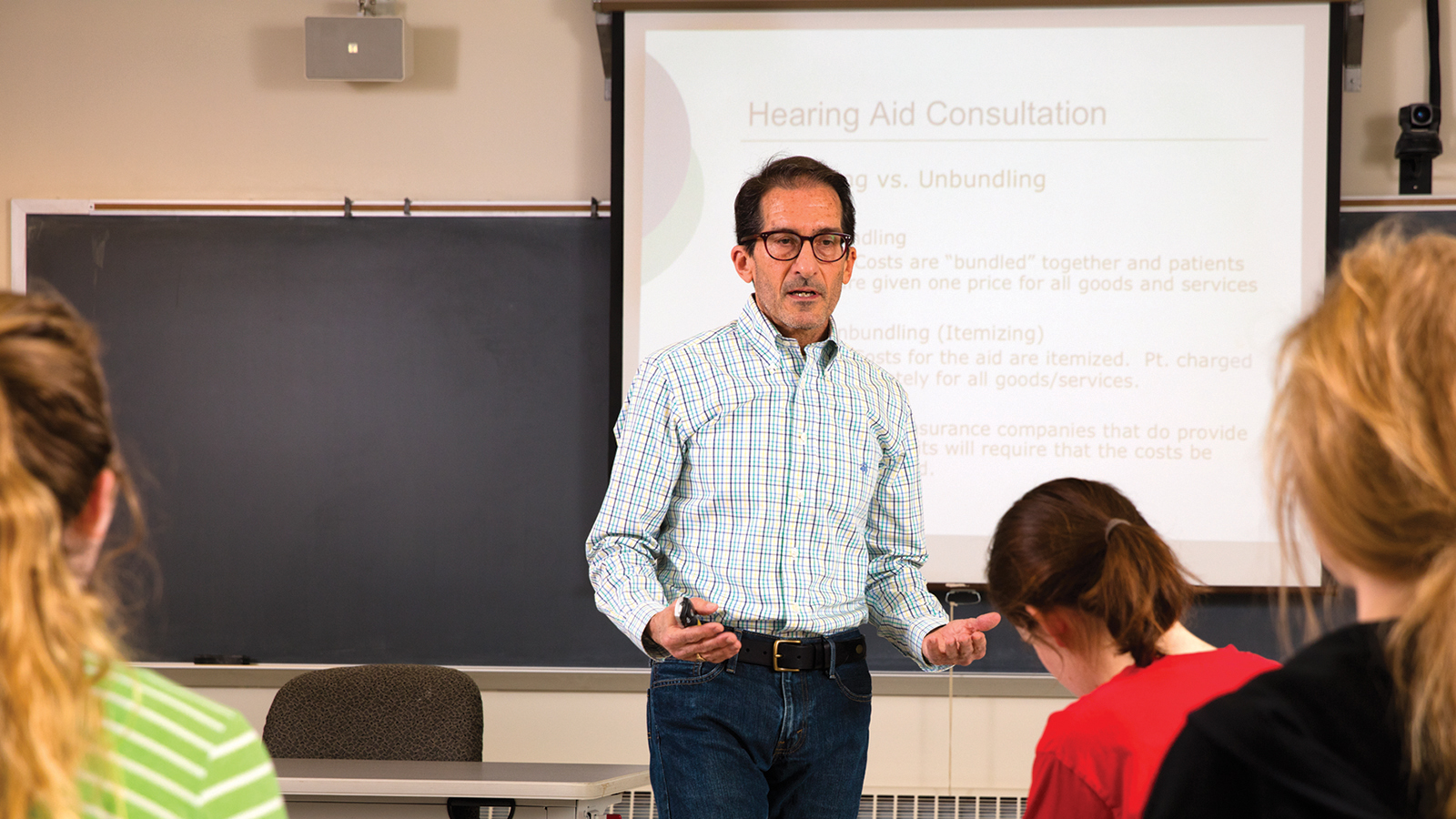
Stephen Boney: 30 years at Nebraska
02 Dec 2016
Stephen Boney, who serves as an associate professor of practice for the audiology program in the Department of Special Education and Communication Disorders, will be recognized for his 30 years of service at the University of Nebraska-Lincoln during the college-wide meeting for the College of Education and Human Sciences Dec. 2. Boney, who served as the interim chair for SECD in 2011, coordinates Nebraska's Au.D. program.
Describe what the audiology program was like when you arrived at Nebraska in 1986.
It was a small program, with four or five graduate students in the master's program at that time. Newell Decker and I served as the audiology faculty, with Irv Deshayes as the clinic coordinator. Clinically, we had an established hearing clinic which primarily served adult patients. In addition, we had a contract with Lincoln Public Schools to see pediatric patients who could not be seen through the LPS audiology program.
What were your expectations when you joined the faculty at Nebraska?
My chief expectation was to step in and develop an aural rehabilitation component to the program, both didactically and clinically. In addition, I had hoped to expand our outpatient services to include dispensing hearing aids. The dispensing component came several years down the road.
Did you think you would still be here to receive a 30-year service recognition?
Honestly, no. Before I joined the faculty, I had never lived anywhere longer than seven or eight years. The original plan was to stay here 3-4 years then move on to a different position. Plans do change. My wife and I came to enjoy our time in Lincoln and felt it was a good place to raise our children. I have to say that I did have second thoughts about my move to Lincoln our first winter here. That year we had a snow storm on April 1 that left 12 inches of snow.
How has the audiology program changed in your 30 years at Nebraska?
The program has changed considerably. The size of the program has grown both in terms of student census and faculty. Currently, we have 35 students in the Au.D. program spread across a span of four years. This year we had our largest incoming first-year class of 14 students. Our program has continued to add new teaching/research faculty, along with our clinical faculty. The university made the transition from a master-level entry to a professional doctoral-level (four years post-baccalaureate) program. The Au.D. program continues to move up in the U.S. News & World Report rankings, which speaks to the quality of training students receive in our program. The clinical services we provide to patients has grown to include hearing evaluations, hearing aid dispensing, along with a dizziness and balance clinic. In addition, the clinic handles three hearing aid banks for patients from across the state and across the lifespan.
What are the three greatest highlights of your career at Nebraska?
There are three things that come to mind. First, was our transition from the master's to professional doctoral training. This came with a "few" growing pains, but in retrospect those seem minimal. With this came the addition of a new faculty line. Second, was the hiring of an audiologist as our department chair five years ago. Finally, was the remodel of the hearing and hearing aid clinic areas to update the physical plant from a 1970s to a new millennium layout.
Special Education and Communication Disorders